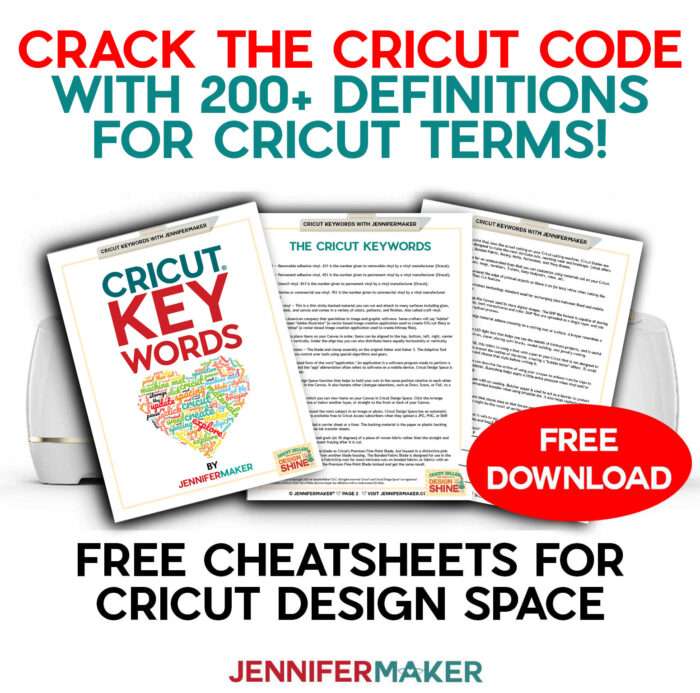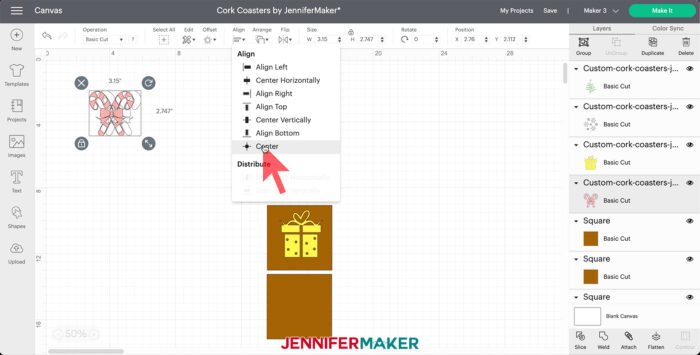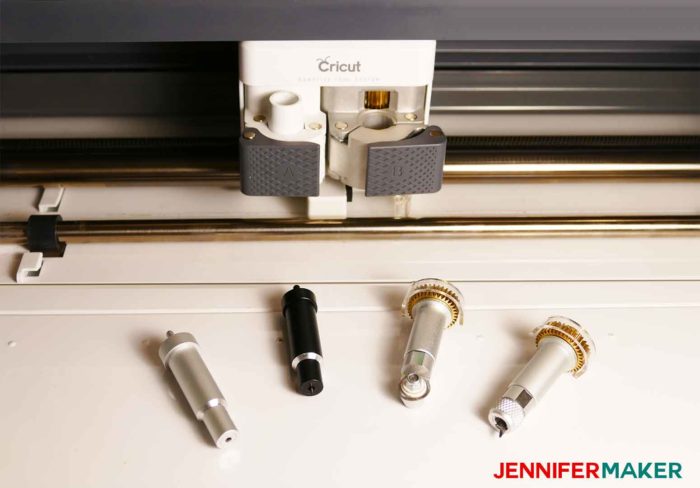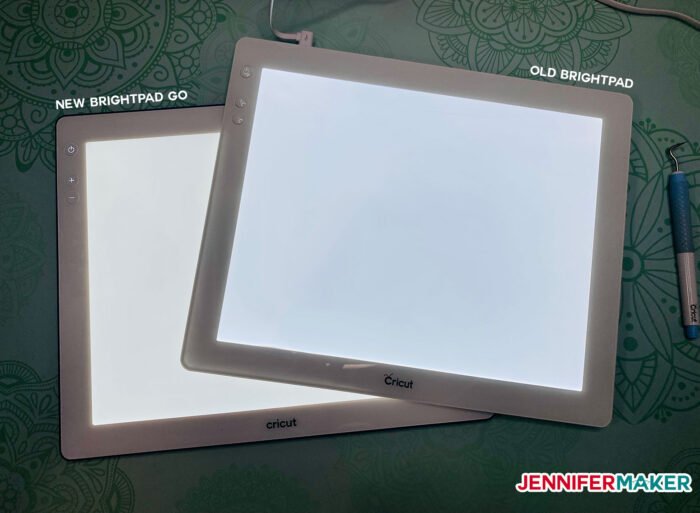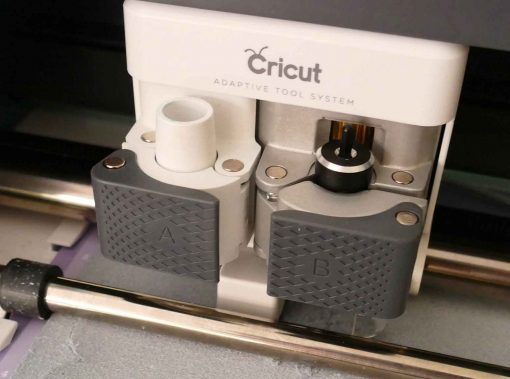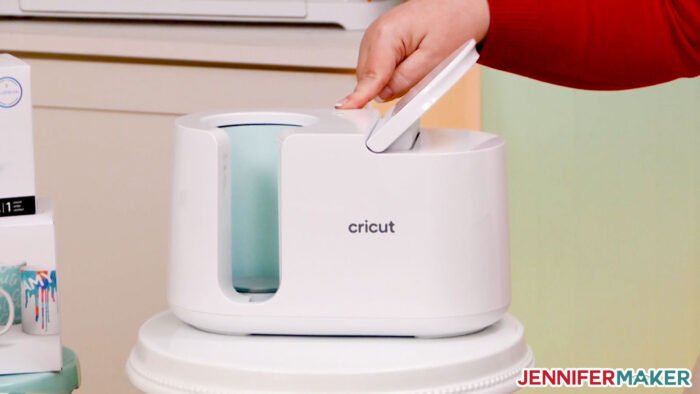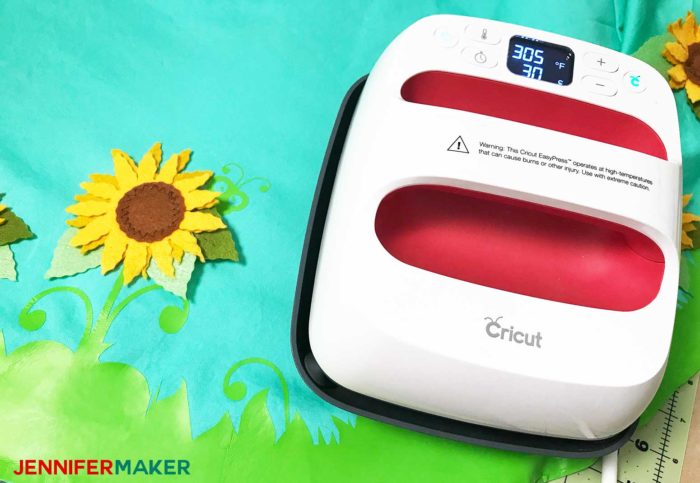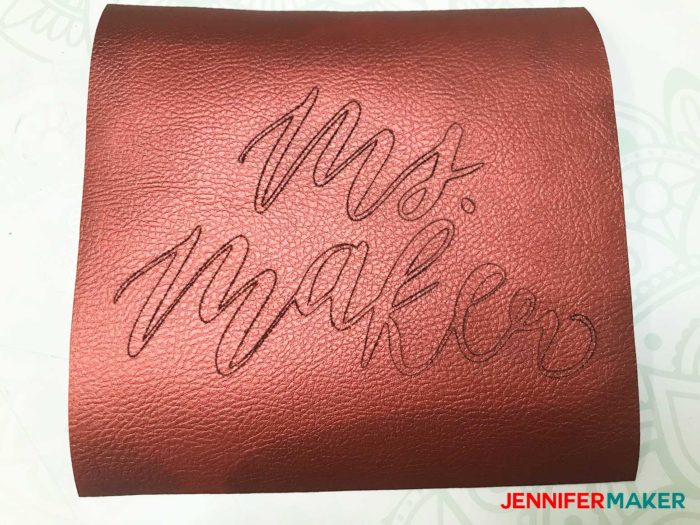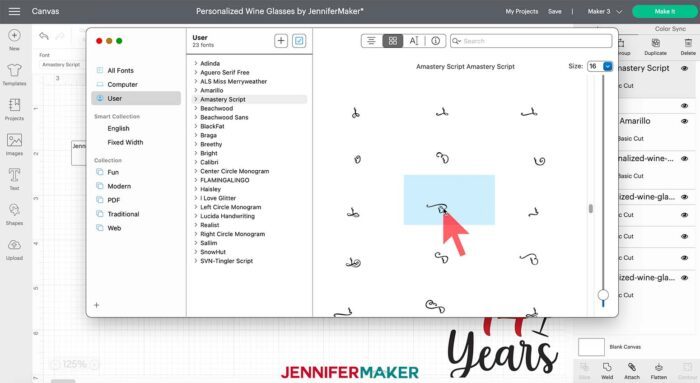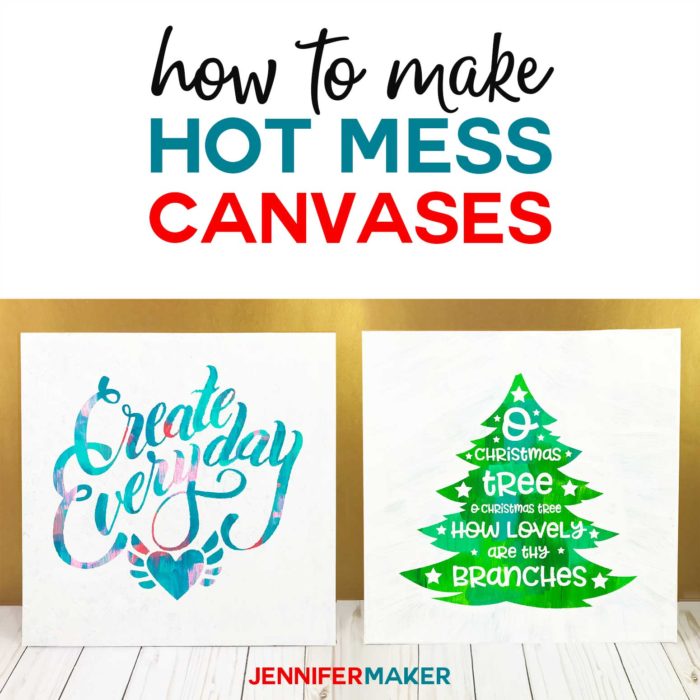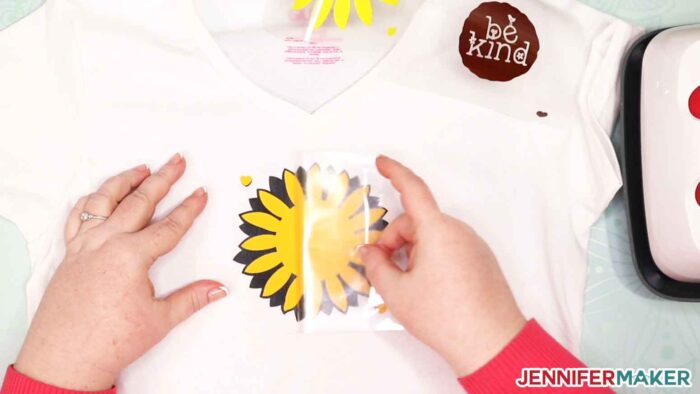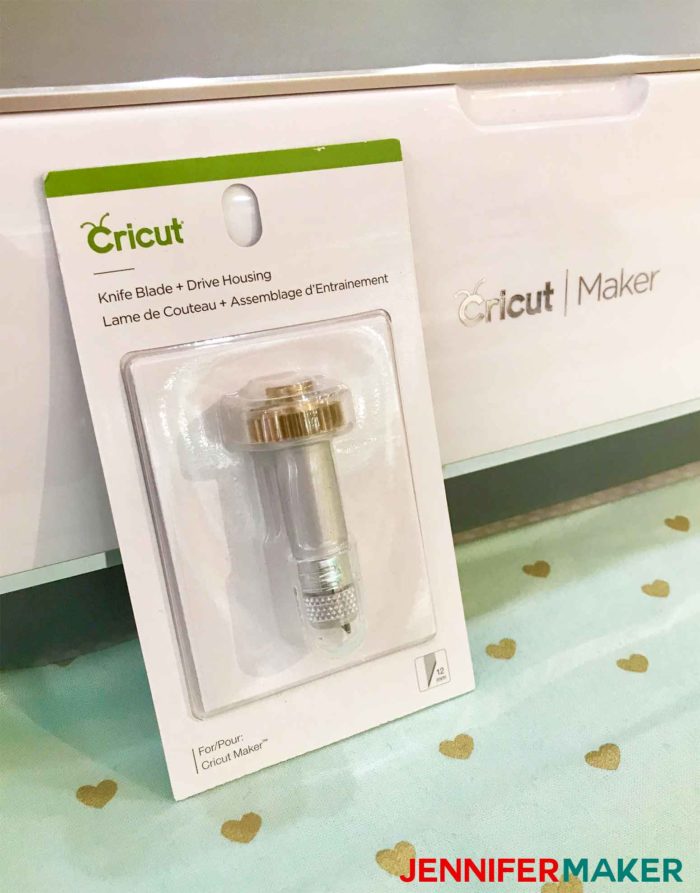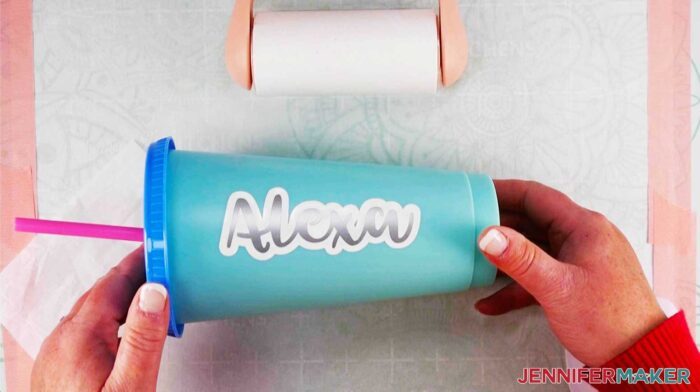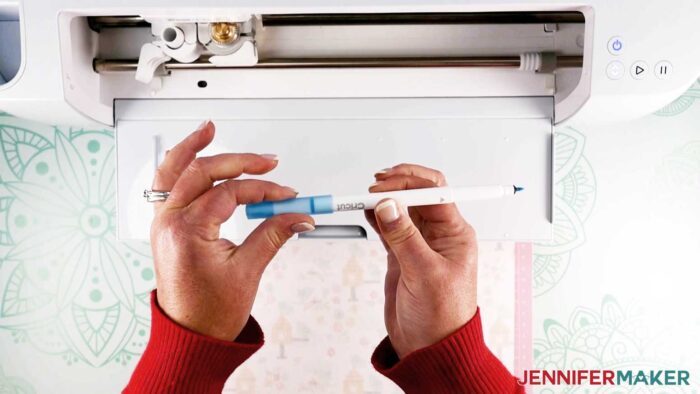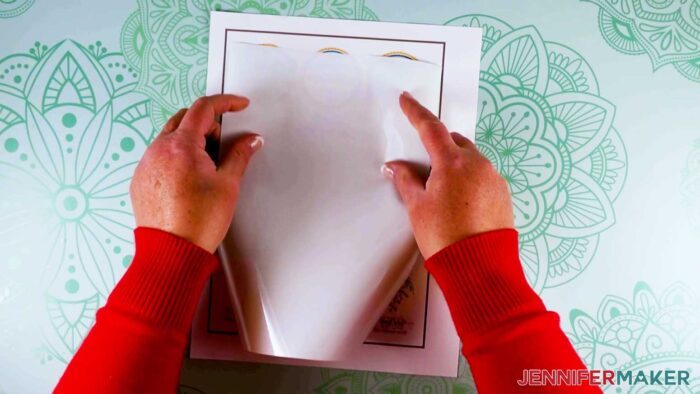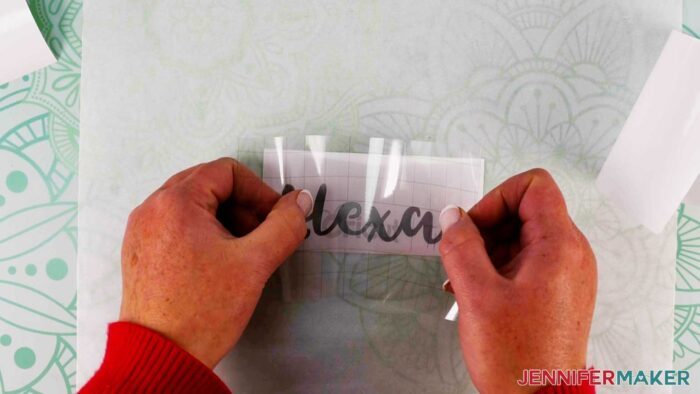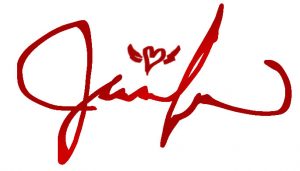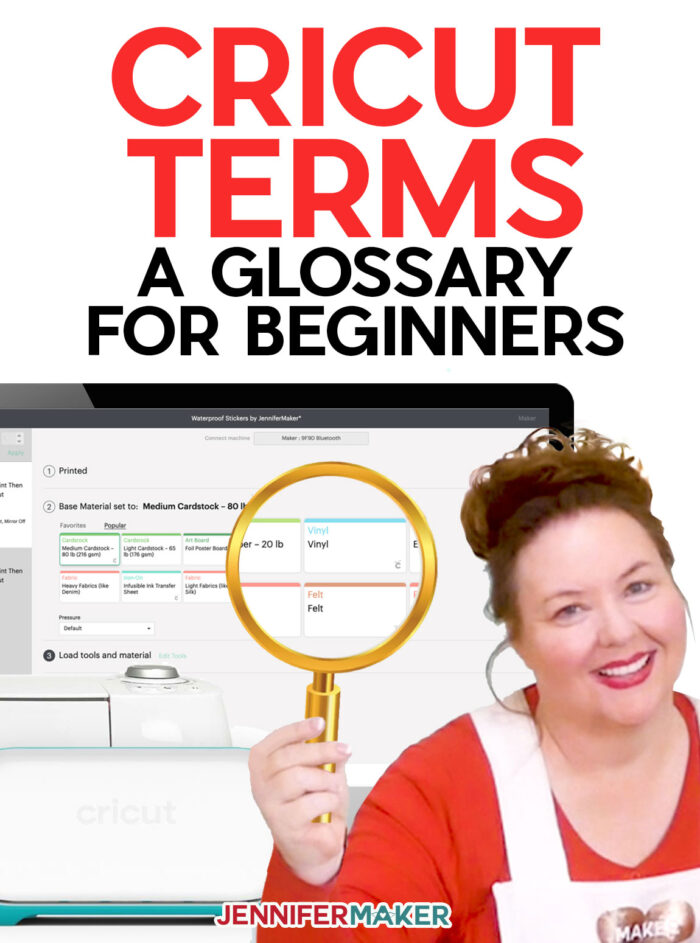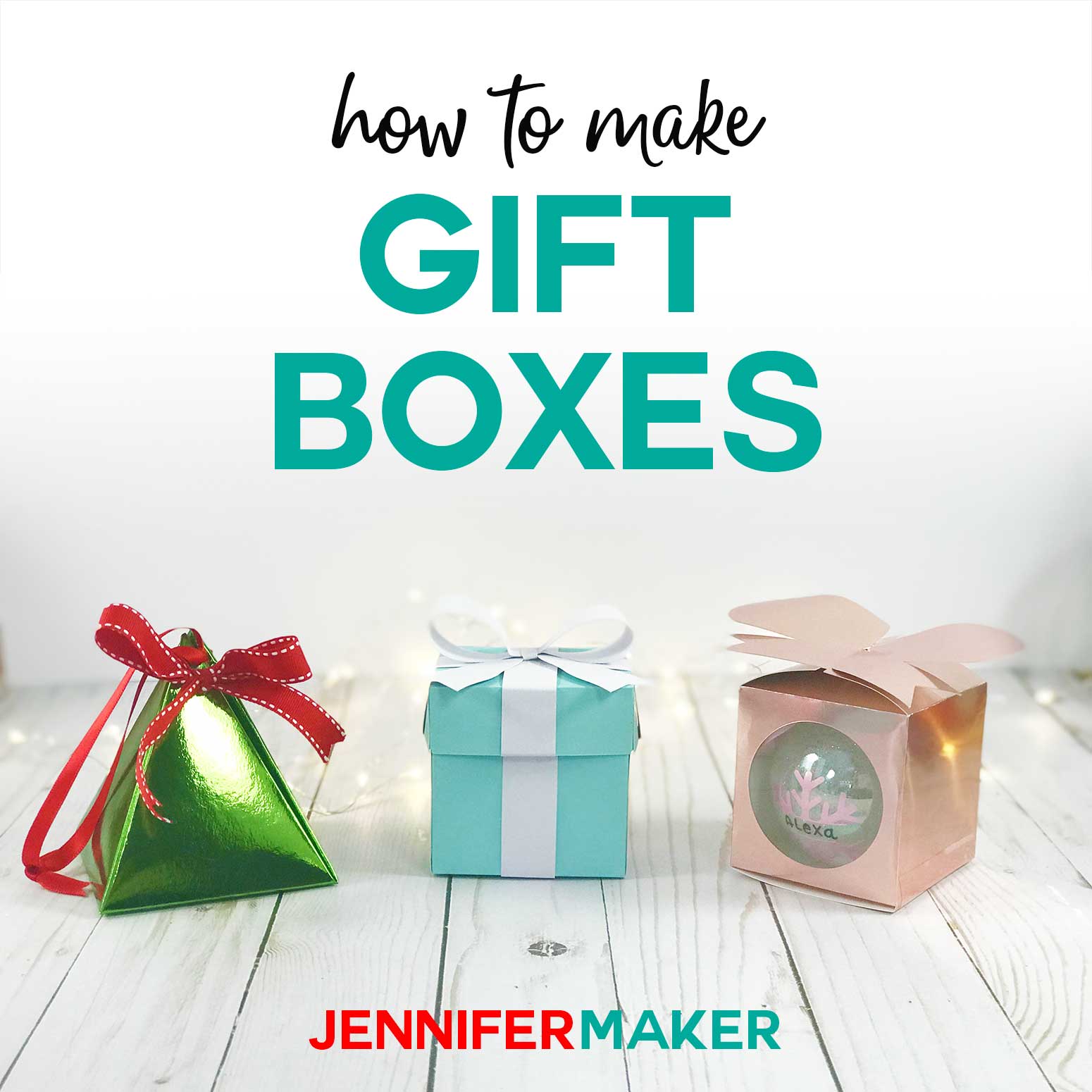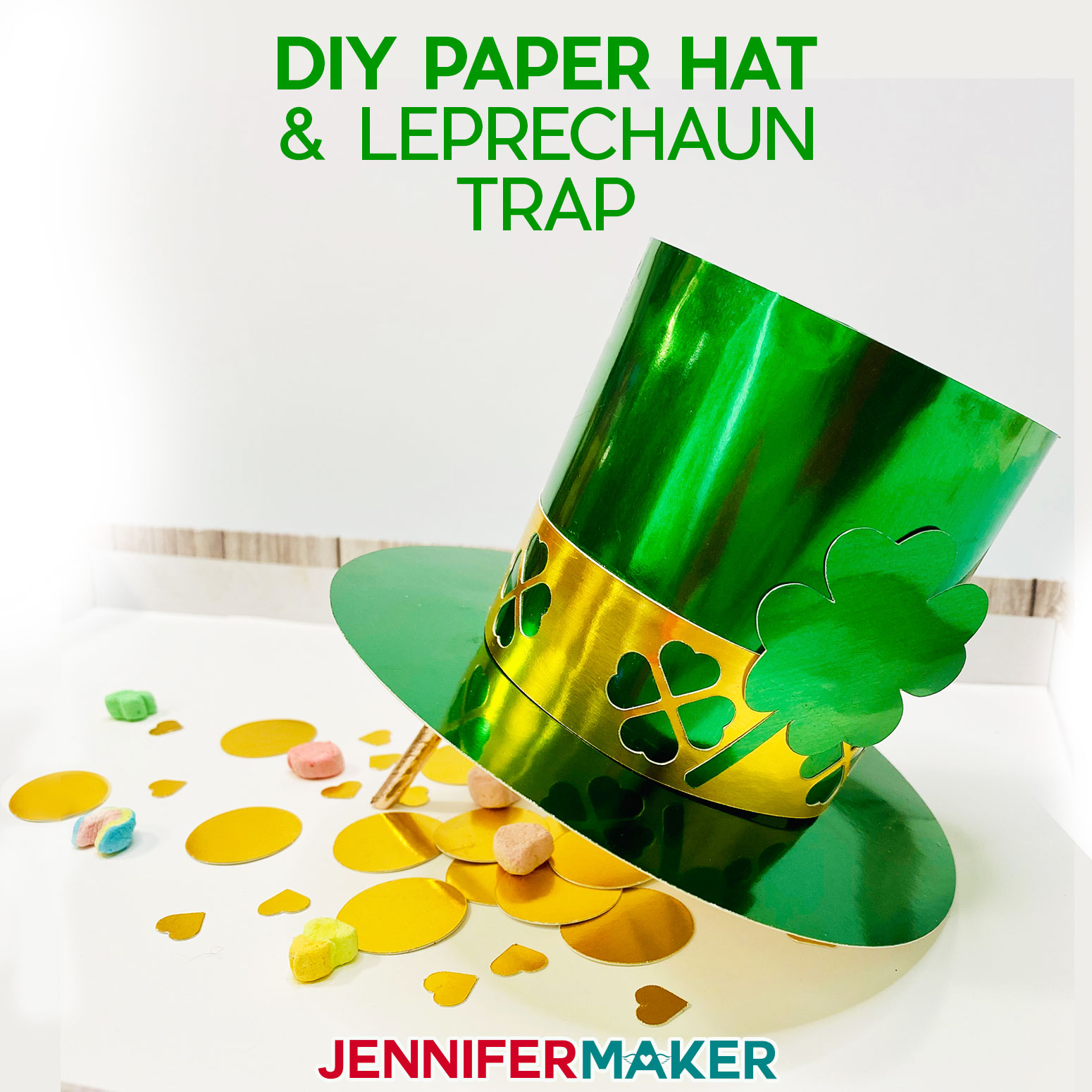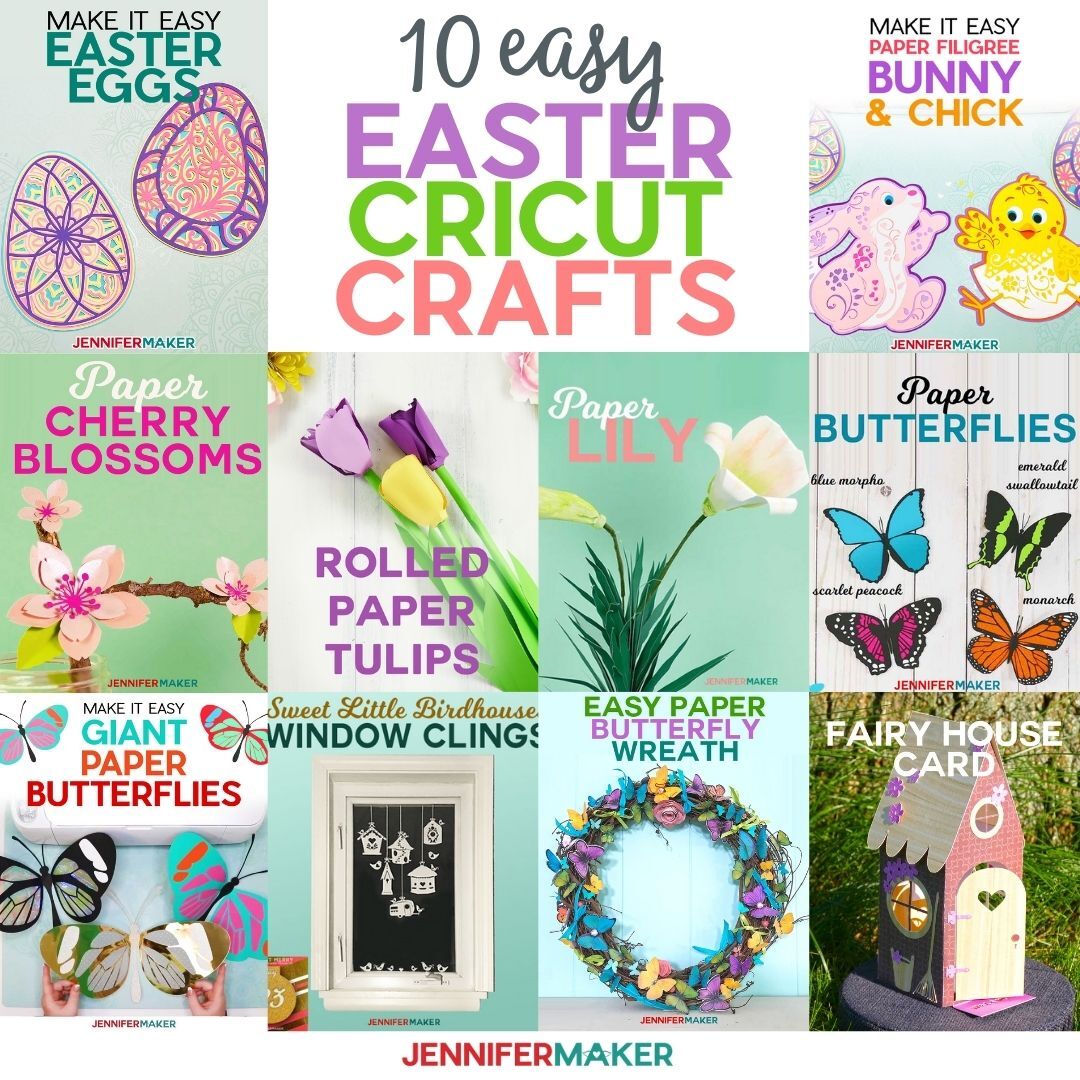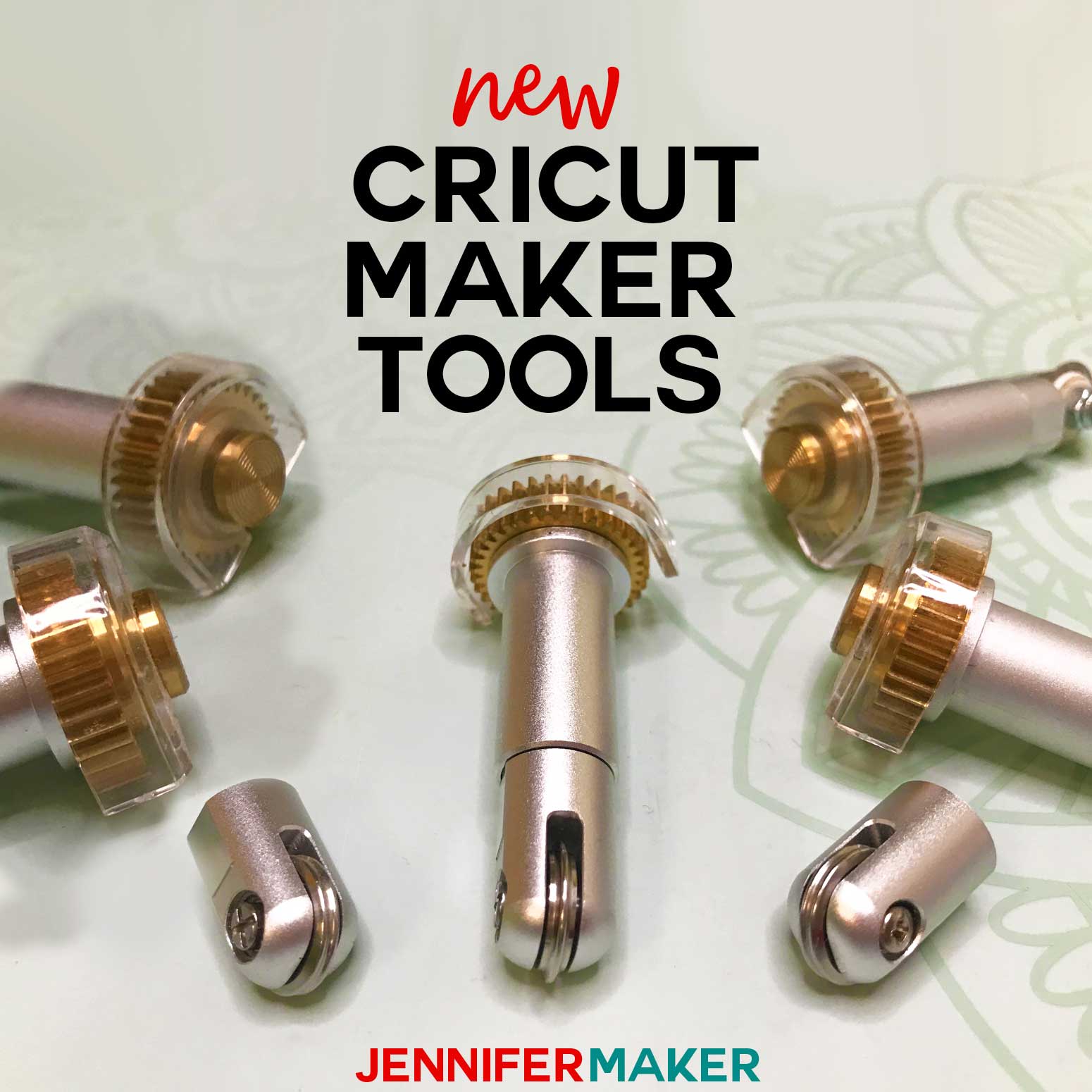Learn what all those Cricut terms, acronyms, and phrases mean once and for all!
“Did you upload the SVG or the ZIP to CDS on iOS?” If this just sounds like code or gibberish to you, I can help! I’ve gathered together more than 200 Cricut terms and defined all of them! I’ve got acronyms, phrases, and all the weird words! I can help you crack the Cricut code and never be confused again. (By the way, that first sentence means “Did you transfer the design file, or the archive it came in, to Cricut Design Space on your iPhone/iPad?”) I recommend you either search this page for the word that’s stumped you, or download my free printable glossary with 17 pages of definitions to keep handy next to your Cricut cutting machine!
The Cricut Terms from A to Z
Numbers (631 to 951)
631 — Removable adhesive vinyl. 631 is the number given to removable vinyl by a vinyl manufacturer (Oracal).
651 — Permanent adhesive vinyl. 651 is the number given to permanent vinyl by a vinyl manufacturer (Oracal).
813 — Stencil vinyl. 813 is the number given to permanent vinyl by a vinyl manufacturer (Oracal).
951 — Marine or commercial use vinyl. 951 is the number given to commercial vinyl by a vinyl manufacturer (Oracal).
A (adhesive vinyl to arrange)
adhesive vinyl — This is a thin sticky-backed material you can cut and attach to many surfaces including glass, plastic, metal, and canvas and comes in a variety of colors, patterns, and finishes. Also called craft vinyl.
Adobe — An American company that specializes in image and graphic software. Some crafters will say “Adobe” when they mean “Adobe Illustrator” (a vector-based image creation application used to create SVG cut files) or “Adobe Photoshop” (a raster-based image creation application used to create bitmap files).
align — Used to place items on your Canvas in order. Items can be aligned to the top, bottom, left, right, center horizontally, or vertically. Under the align key you can also distribute items equally horizontally or vertically.
Adaptive Tool System — The blade and clamp assembly on the original Maker and Maker 3. The Adaptive Tool System offers more control over tools using special algorithms and gears.
app — An abbreviated form of the word “application.” An application is a software program made to perform a specific function, and the “app” abbreviation often refers to software on a mobile device. Cricut Design Space is an example of an app.
attach — A Cricut Design Space function that helps to hold your cuts in the same position relative to each other on the cutting mat as in the Canvas. It also fastens other Linetype selections, such as Draw, Score, or Foil, to a Cut layer.
arrange — The order in which you can view items on your Canvas in Cricut Design Space. Click the Arrange button to send items above or below another layer, or straight to the front or back of your Canvas.
B (background to butcher paper)
background — The area around the main subject in an image or photo. Cricut Design Space has an automatic background remove feature available free to Cricut Access subscribers when they upload a JPG, PNG, or BMP.
backing material — Also called a carrier sheet or a liner. The backing material is the paper or plastic backing attached to vinyl and Infusible Ink transfer sheets.
bias cut — To cut on the diagonal grain (at 45 degrees) of a piece of woven fabric rather than the straight and cross grains. Doing this can prevent fraying after it is cut.
Bonded-Fabric Blade — The same blade as Cricut’s Premium Fine-Point Blade, but housed in a distinctive pink housing so you can tell it apart from another blade housing. The Bonded-Fabric Blade is designed for use in the Explore and Maker series with the FabricGrip mat for more intricate cuts on bonded fabrics or fabrics with an iron-on backer. You may also use the Premium Fine-Point Blade instead and get the same result.
blade — A sharp steel point that does the actual cutting on your Cricut cutting machine. Cricut blades are versatile and specially designed to make the most intricate cuts, resisting wear and breakage. Cricut offers Fine-Point, Deep-Point, Bonded-Fabric, Rotary, Knife, Perforated, and Wavy Blades.
blank — A common name for an undecorated item that you can customize using materials cut on your Cricut. Blanks can include coasters, mugs, tumblers, T-shirts, baby bodysuits, totes, etc.
bleed — Adds extra color around the edge of printed objects so there is no (or less) white when cutting the object out with the Print Then Cut feature.
Bluetooth — A short-range wireless technology standard used for exchanging data between fixed and mobile devices over short distances.
BMP — A bitmap graphic image file format used to store digital images. The BMP file format is capable of storing two-dimensional digital images, both monochrome and color. BMP files are uploaded as a single layer, and you can edit the image during the upload process.
brayer — A roller tool used to help material adhere smoothly to a cutting mat or surface. A brayer resembles a small paint roller.
Brightpad — Cricut BrightPad is a LED light box that helps you see the details of intricate projects, and is useful for tracing, weeding vinyl and iron-on, paper piecing quilt blocks, model building, and jewelry making.
bubble letters — In the Cricut world, this refers to using a font with a pen in your Cricut that is not designed to be a writing font, as the pen writes around the outline of the letter, creating a “bubble letter” effect. To avoid this, use a font with a writing style and choose that style before writing it.
burnish — To rub or polish. This term can describe the action of using your scraper to adhere transfer tape to vinyl and also to adhere vinyl to a material. Burnishing helps apply a little extra pressure when vinyl and/or transfer tape need some help sticking.
butcher paper – Bleached or brown paper with no coating. Butcher paper is used to act as a barrier to protect your blank, mat, and heat plate from unwanted transfer when using Infusible Ink. It also helps capture moisture released during the pressing process.
C (cache to curve)
cache – A hardware or software component that stores data so that future requests for that data can be served faster. The data stored in a cache might be the result of earlier computations or a copy of data stored elsewhere.
Cake Blade – A specially-designed blade that is safe to use for food items and is compatible with the Cricut Cake and Cricut Cake Mini machines. These blades and housings have been discontinued.
calibrate — A Cricut function that properly positions your blade assembly in your cutting machine, giving you the most accurate and precise cuts possible for your projects. Calibration gauges, measures, and adjusts the alignment, sizing, and cut accuracy of your blade.
Canvas — The big white workspace in Cricut Design Space where you design and work on your projects. On the Canvas, you can add and edit projects, images, and text.
Card Mat — A uniquely-designed mat used only with the Cricut Joy cutting machine to cut cards on folded cardstock. The Card Mat features a divider to protect the back of the folded Cricut Insert Card while cutting a design on the front.
cardstock — Paper that is thicker and more durable than normal writing and printing paper, yet thinner and more flexible than other forms of paperboard. Cardstock typically comes in 65 lb., 80 lb., and 110 lb. weights. Cardstock is our go-to when we want to create a craft with substance.
carriage — The carriage is the part of your Cricut machine that holds the blade and other tools. It moves back and forth along the roller bars.
carrier sheet — See backing material.
cartridge — A collection of images in Cricut Access, usually centered around a theme, a season, a holiday, a type, licensed characters, etc. Cricut used to sell physical cartridges that could be plugged into a machine, but now only sells virtual cartridges. If you have physical cartridges you’d like to use but no adapter, you can call Cricut Member Care who will help you link your cartridges to Design Space.
CDS — An abbreviation for Cricut Design Space.
clearing cache — The act of clearing temporary files to create space or reset storage. Clearing your cache won’t erase login credentials, downloaded files, or custom settings. To clear your Cricut Design Space cache, open the LocalData folder, select all files within the folder, then use Shift + Delete to permanently delete those items. Also see https://help.cricut.com/hc/en-us/articles/360040718434-Design-Space-for-Desktop-Clearing-Application-Cache
Color Sync — A Cricut Design Space feature that helps you match colors, or consolidate colors of a project to reduce the number of different materials you plan to use. You can sync layer colors by dragging an image layer in the Color Sync panel and dropping it on another layer whose color you want to match.
Collections — The organization system in Cricut Design Space. Collections let you organize projects into “folders” you create for ease in finding them later. This feature is currently on available in Design Space for Desktop.
Color Tolerance — An option to tell how different in tone and color a pixel can be from the area we clicked on for it to be included in the selection. In Cricut Design Space’s upload screen, you can set the Color Tolerance number to help you select more or less of a color, which is useful when removing the background. The lower the color tolerance, the more will get selected. A high color tolerance number can select most, if not all, of the pixels.
contour — A feature in Design Space that allows you to hide a portion of an image by removing any unwanted cut lines. Multilayer images need to be ungrouped prior to using Contour.
counter — The area of a letter that is entirely or partially enclosed by a letter, number, or symbol (the counter-space/the hole of). Letters with closed counters usually include A, B, D, O, P, Q, R, a, b, d, e, g, o, p, and q. The numbers with counters are 0, 4, 6, 8, and 9.
Craft Room software — An application used to control the older Cricut cutting machines, such as the Cricut Expression. Cricut Craft Room was discontinued in July 2018 due to its out-of-date technology (Adobe Flash), and was replaced by Cricut Design Space.
Cricut Access — Cricut Access is an auto-renewing subscription product that gives access to the Cricut Image Library of 200,000+ non-licensed images plus thousands of projects and hundreds of fonts in Cricut Design Space. Images, fonts, and ready-to-make projects that are included in Cricut Access will appear with the Cricut Access logo. In addition, Cricut Access membership offers priority member care, 10% savings on premium licensed fonts and images, and 10% off purchases on cricut.com. Cricut Access premium membership is also available and provides 10-20% off purchases on cricut.com and free economy shipping on orders of $50 or more.
Cricut Cake — An older cutting machine specifically designed, using food safe material, to cut edible material including gum paste, frosting sheets and more. The Cricut Cake did not require a computer and was designed to function with Cricut Cartridges as a standalone machine. This cutting machine is no longer available.
Cricut Design Space — The official software program that controls the functions of the Cricut cutting machines. Cricut Design Space is free and available for Desktop, iOS, and Android.
Cricut Explore — The first of the modern Cricut cutting machines, released in 2014. The Cricut Explore looks similar to a Cricut Explore Air, but is lacking the ability to connect with Bluetooth. A separate adapter called the Cricut Wireless Bluetooth Adapter is available for purchase for this model.
Cricut Explore One — The second of the modern Cricut cutting machines, released in May 2015. The Cricut Explore One has a single tool holder which can accommodate the same tools as the other Explore series machines.
Cricut Explore Air — The third of the modern Cricut cutting machines, released in 2016. The Cricut Explore Air adds in built-in Bluetooth wireless capabilities.
Cricut Explore Air 2 — The fourth of the modern Cricut cutting machines, released in October 2016. It has everything that the Cricut Explore Air offers, with faster cuts.
Cricut Explore 3 — The latest Cricut cutting machine released in June 2021 concurrently with the Cricut Maker 3. This cutting machine features faster cutting speeds and the ability to cut without a mat using special Cricut Smart Materials. The Cricut Explore 3 uses the same blades and tools as the Cricut Explore series.
Cricut Expression — An older Cricut cutting machine that used cartridges and did not need to be connected to a computer. Released in February 2010. This cutting machine cannot connect to Cricut Design Space.
Cricut fonts — Text typefaces found only in Cricut Design Space.
Cricut Imagine — An older Cricut cutting machine that used cartridges and did not need to be connected to a computer. Released in summer 2010. This cutting machine cannot connect to Cricut Design Space.
Cricut Joy — A compact cutting machine, less than half the size of Cricut Explore and Cricut Maker. The Cricut Joy is pared down a bit from the other Cricut machines, with a single blade and pen holder. The cut width is 4.5″ maximum, and it has no Print Then Cut sensor or scoring stylus.
Cricut Joy Blade — An all-purpose blade designed specifically for use with the Cricut Joy cutting machine. The blade can be used with many popular materials and all Cricut Joy materials including Smart Materials, Infusible Ink Transfer Sheets, Insert Cards, vinyl, iron-on vinyl, cardstock, poster board, and much more.
Cricut Joy Foil Transfer Tool — A special tool used with Cricut Foil Transfer Sheets to add a foil effect to projects on a variety of base materials. Compatible only with Cricut Joy.
Cricut Maker — The fifth of the modern Cricut cutting machines, released in August 2017. The Maker does everything the Cricut Explore Air does, but adds the Adaptive Tool System which an accommodate more blades, including the rotary blade and knife blade. It also offers stronger cutting pressure, enabling it to cut thicker materials such as basswood and chipboard.
Cricut Maker 2 — There was no Cricut Maker 2. If you hear someone say they have a Maker 2, they usually mean they have the original Maker.
Cricut Maker 3 — The latest Cricut cutting machine released in June 2021 concurrently with the Cricut Explore 3. This cutting machine features faster cutting speeds and the ability to cut without a mat using special Cricut Smart Materials. The Cricut Maker 3 uses the same blades and tools as the Cricut Maker.
Cricut Mug Press — A compact heat press designed for specifically for pressing Infusible Ink and sublimation prints onto ceramic mugs. The Cricut Mug Press works with 12-15 oz. sized sublimation mugs.
custom material — A special material setting within Cricut Design Space for a specific material. Setting a Custom Material allows you to set the pressure, number of cuts through the material, and type of blade.
Cut Above — An SVG design course from JenniferMaker. Cut Above teaches how to create SVG files with actionable techniques and hands-on projects. This step-by-step course teaches you everything you need to know to design SVG cut files that work with less fuss and bother. Includes eight units and 50+ video lessons. Get details at jennifermaker.com/cutabove
cut files — Digital vector images that have been prepared to cut with a particular machine. Cut files are usually associated with the SVG format, but DXF is another cut file format (albeit with less function).
cut lines — The Linetype that tells your machine how to interact with your materials. In this instance, it applies pressure on a blade to cut.
Cutie — A little collectible plastic figurine of the Cricut mascot (a “cute cricket”). You cannot buy Cricut Cuties outright — you can only get them with the purchase of something else (for example, with a Cricut Mystery Box) or have them given to you. Some Cricut mystery boxes have a Cricut Cutie inside, but not ALL do.
cutting machine — Devices with blades that connect to your computer (either via USB cord or Bluetooth) and cut a variety of materials according to the specifications sent to it by your computer.
cutting mat — A reusable adhesive machine mat for holding various materials in place while cutting on a cutting machine. There are five Cricut cutting machine mats: the blue Light Grip mat, the green Standard Grip mat, the purple Strong Grip mat, the pink Fabric Grip mat, and the Card Mat for the Cricut Joy.
Cuttlebug — A discontinued embossing machine made by Provocraft. The Cricut Cuttlebug Embosser applies a unique rolling technology that creates deep, consistent embossing patterns. To use it, place your material in the embossing folder, sandwich the folder between the two cutting pads, and roll through the machine.
curve — A text function in Cricut Design Space that allows you to transform your text into a semi-circular shape. The Curve tool can be found in the Text Edit bar at the top of the Canvas, between the Alignment and Advanced tools.
D (decal to DXF)
decal — A design prepared for transfer onto another surface
Debossing Tip — This tip adds dimension to your project by creating detailed depressions to a variety of materials such as cardstock, craft foam, faux leather, poster board, chipboard, matboard and so much more. The Debossing Tip uses the Cricut QuickSnap Housing and is only compatible with the Maker Series machines.
Deep Point Blade — A steeper-angled blade made of a harder steel that is used to make deeper cuts on the Cricut cutting machine (Explore and Maker). The Deep Point blade and housing are recommended for intricate cuts on thicker materials such as magnet, thin chipboard, stamp material, thick card-stock, stiffened felt, foam sheets, cardboard, some fabrics, and other thicker materials. The Deep Point blade housing is black in color and has a steeper blade angle (60 degrees vs 45 degrees for the other fine point blades).
Design to Shine — The Ultimate Cricut Design Space Course to learn how to do all the things in Cricut Design Space and make amazing things you can display, share, and sell. This special series of in-depth online Cricut classes will get you on your feet and running with all of your amazing ideas, from concept to design to finished project, step by step.
dial — Abbreviation for the Smart Dial on a Cricut Explore 1 and 2. The Smart Dial is used to select material type before cutting. Set it to Custom to access more material settings in Cricut Design Space.
digital mystery box — An all-digital collection of images to which you get access immediately after purchase — no physical products are shipped to you. Digital mystery boxes can include: Digital Cut Files, Print Then Cut Image Sets, Licensed Images, and Fonts. When a Cricut Mystery Box is digital, it will be clearly marked as such.
double cut — The act of cutting material twice. To do this, either press the Go button after the first cut is finished (and before you unload your mat), or to to your Manage Custom Material settings and change the number of cuts for your material setting. Double cuts can help you get a cleaner cut on some materials.
Double Scoring Wheel – A Cricut tool that creates two deep parallel lines, and is intended for scoring thicker materials like poster board or cardboard. The Double Scoring Wheel tool uses the QuickSnap Housing and is only compatible with the Cricut Maker series of cutting machines.
download — To transfer data from one computer to another, typically from one that is larger or remote to your own computer or device. In the Cricut community, this usually means to transfer a ZIP file from a site or file repository to yourself so you can then upload it to Cricut Design Space. See also upload.
DS — Acronym for Cricut “Design Space.”
DXF — A vector image file format—short for Drawing Exchange Format. DXF is an open-sourced computer-aided design (CAD) data file format developed by Autodesk in 1982. The format is used to export designs between a variety of software applications. DXF format files use a vector file type so the image quality does not degrade.
E (EasyPress to Explore)
EasyPress — A portable heat press with a large, flat platten for pressing iron-on vinyl. The Cricut EasyPress was originally released in August 2017 with a 9″x9″ (25 cm x 25 cm) heat plate, and now also comes in a 12″ x 10″ size as well as a much smaller mini size.
Engraving Tip — A Cricut tool that allows you to engrave/carve unique designs on a wide variety of materials including acetate, aluminum, leather, plexiglass, metal, and more. The Engraving Tip is part of the QuickSnap Housing and is only available for the Maker Series machines.
Explore — Short for “Cricut Explore” cutting machine.
F (fabric grip mat to freezer paper)
fabric grip mat — This pink machine mat is made of a stronger, denser material to withstand the intense cutting pressures associated with using the Rotary Blade, making it possible for a Cricut Maker to cut fabric without a fabric stabilizer.
fabric pen — A water-soluble pen that is used to mark sewing and cutting lines to aid in the assembly of fabric projects.
fast mode — a feature of the Cricut Explore (Air 2 and newer) and Cricut Maker series machines which allows you to cut and write up to 2x faster on a mat than previous models. This feature is available with the Vinyl, Iron-on, and Cardstock material settings in Design Space (Vinyl to Cardstock+ on the Explore Air 2).
faux leather — Easy to cut, textured vinyl that often looks like real leather. Faux leather gives all the benefits of leather without the extra cost or cruelty to animals. Crafters use faux leather to create fashion accessories, home decor, and paper crafting accents.
FB group — Short for “Facebook group.” These groups can be public or private. They are run by businesses and individuals with like-minded interests. Members of the group can post and interact within the group.
fill — A function for applying a color or pattern inside a shape or object. In Cricut Design Space, Fill applies to the color of a cut layer, or the pattern of a print then cut layer.
fine point blade — The primary blade used by a Cricut cutting machine. Cricut has three Fine-Point blades, each color-coded for ease is selecting with the proper material. For older Cricut machines, this is also known as the Standard Replacement blade. See Premium Fine-Point Blade, Deep Point Blade, and Bonded-Fabric Blade for additional information on each.
firmware — Software programmed into read-only memory of a device, such as a Cricut cutting machine. Your machine may perform firmware updates over time to improve the performance or add features.
flatten — A Cricut Design Space function that allows you to turn any image into a single, printable layer for the Print then Cut feature.
flip — A Cricut Design Space function that lets you reflect your design horizontally or vertically.
Foil Transfer Tool — A Cricut tool used with Foil Transfer Sheets to add a foil effect to projects on a variety of materials. The Foil Transfer Tool comes with three interchangeable tips – fine, medium, and bold – all suitable for projects ranging from simple outlines to intricate designs. The tool is compatible with the Explore and Maker Series cutting machines. There is a separate Foil Transfer Tool available for Cricut Joy cutting machines.
Foil Transfer Sheets – A material with a special coating that can be transferred to material such as cardstock to create a foil effect. Used in conjunction with the Cricut Foil Transfer Tool.
font — A character typeface. Fonts typically include lowercase and uppercase letters, numbers, punctuation marks, and symbols.
force — Pressure applied by the blade assembly on your Cricut cutting machine.
freezer paper — Bleached paper with a plastic coating on one side only.
G (GIF to group)
GIF — A bitmap image format. GIFs can be static images or combined together in a series of images that will loop continuously.
glyph — The shape or representation of a character, number, or symbol. In the Cricut community, we use the term to mean the extra characters, numbers, and symbols in a font beyond the basic numbers and letters we type on our keyboards. For example, a lowercase “n” character may be represented by glyphs of a standard lowercase “m,” a small cap “m,” and a swash “m.” However, a capital “M” and an italic “M” are different characters entirely. To access and copy glyphs to use in Cricut Design Space, open the Font Book app on a Mac, or the Character Map app on Windows.
Go button — The button you press on your Cricut cutting machine that starts the blade assembly moving. Also called the “Cut” or “Start” button. This button looks like the Cricut logo on the Cricut Explore Air2 and original Cricut Maker. On the Cricut Explore 3 and Maker 3, it looks like a Play arrow.
grid — The lines of measurement appearing behind your design on your Canvas in Cricut Design Space.
group — A Cricut Design Space function that lets you keep objects together in your design but not necessarily on your mat (you still need to use the Attach function to keep things together on the mat). Sometimes projects and uploaded images will be grouped when you open/insert them, and you’ll need to ungroup them so you can make changes.
H (heat press to HTV)
heat press — A machine that uses high temperatures and pressure to apply special materials to a blank. Materials such as iron-on vinyl (also called Heat Transfer Vinyl) and Infusible Ink are examples of materials that can be applied with a heat press.
heat resistant tape — An adhesive material used to keep your design in place during the heat press transfer process. Use it to apply your custom designs to T-shirts, tote bags, and mugs. Heat Resistant Tape holds up to the pressure of the professional heat press and is used for positioning HTV, iron-on, Infusible Ink designs, and other heat-transfer materials onto garments, and many other textiles, including coasters, notebooks, key rings, and more.
heat transfer vinyl — A specialty material with a heat- and pressure-activated adhesive that adheres to materials such as cotton, canvas, and more. It is also commonly called HTV or Iron-On Vinyl.
hide — A Cricut Design Space function that lets you put or keep layers out of sight. Using the eye icon in the Layers panel, you can hide layers without deleting them. Hide is commonly used when a layer is used only to help with sizing.
hot mess canvas – A reverse stencil where the base layer is a crazy mishmash of colors. Hence, a “hot mess.”
housing — The small tubular metal part that holds blades and tools on a Cricut cutting machine. There are different housing components for different blades.
HTV — Short for “heat transfer vinyl.” This is the same as iron-on vinyl.
I (Illustrator to Inkscape)
Illustrator — The industry-standard vector graphics software used worldwide by designers of all types who want to create digital graphics, illustrations, and typography for all kinds of media: print, web, interactive, video, and mobile. JenniferMaker uses Adobe Illustrator to create SVG cut files.
image — An electronic picture. Image types supported by Cricut include PNG, JPG, GIF, SVG, DXF, HEIC, and BMP.
Insert Cards – A special material used with the Cricut Joy to create greeting cards quickly.
iron-on vinyl — See heat transfer vinyl.
Infusible Ink Transfer Sheets — Pre-printed sublimation ink sheets on backing material that can be cut in a Cricut cutting machine.
Inkscape — An open-source vector graphics editor similar to Adobe Illustrator, Corel Draw, Freehand, or Xara X. What sets Inkscape apart is its use of Scalable Vector Graphics (SVG), an open XML-based W3C standard, as the native format.
J (Jennifer Maker to JPG)
Jennifer Maker — The queen of crafting! (And the author of this glossary)
JPG — A bitmap file format.
K (kerning to knife blade)
kerning — The spacing between letters or characters in a piece of text to be printed.
kerned font — The spacing between letters or characters in printed text. In Design Space, Cricut optimized kerning for system fonts and many Cricut fonts so the spacing between letters or characters is automatically more natural. This feature is currently on available in Design Space for Desktop.
kiss cut — A cut that only goes through the material and leaves the liner intact for easy transfer.
knife blade — An extra-deep blade and cuts through dense materials up to 3/32 in (2.4mm) thick. The Knife blade is ideal for cuts of moderate detail in thicker materials such as balsa wood, matboard, and chip board. When using the Knife blade, make sure to move your star wheels on the roller bar to the far right to avoid leaving marks and indentations on your thicker materials. This blade is compatible with the Maker Series machines only.
L (layer to linetype)
layer — A portion of a design that is independent of others. Layers are listed on the right side of the Cricut Design Space Canvas screen, in the Layers panel.
liner — See backing material.
linetype — The operation specific for a layer. Linetypes can be cut, draw, score, deboss, engrave, etc.
M (machine mat to mystery box)
machine mat — The flexible plastic surface coated with adhesive used to hold material in a Cricut cutting machine. See also cutting mat.
Maker — Short for Cricut Maker cutting machine.
mat — See machine mat.
mat guide — Small, narrow plastic strips on the Cricut cutting machine used to position cutting mats correctly.
mat order — The order in which your materials are cut on your Cricut cutting machine, as determined automatically by color in Design Space. Visit https://jennifermaker.com/cricut-mat-order-cut-cricut-order to understand more about mat order.
matless cutting — A feature available on the Cricut Maker 3, Explore 3, and Joy when using Smart Materials. Cricut Smart Materials are the only materials that can be cut without a mat.
MB — Abbreviation for “mystery box” or “megabyte.” When a Cricut crafter says “MB,” they probably are referring to a Cricut Mystery Box.
mirror — A Cricut Design Space function that allows you to display a layer in reverse. Mirroring is mostly used for iron-on vinyl.
mug press — See Cricut Mug Press.
multi-cut — A Cricut Design Space setting for the number of times a material is cut. You can set multi-cuts in the Custom Material Settings.
mystery box — A “grab bag” of items from Cricut, either physical or digital, offered at a steep discount (usually 60-65%). Mystery box contents and/or release dates are the real mystery. Quantities are limited and all sales are final. Learn more about the Cricut Mystery Box here.
O (offset to OTF)
offset — A Cricut Design Space function that creates a proportionally larger or smaller layer of your design, to help you make projects like cake toppers, custom stickers, and T-shirt designs. Offset layers add a “shadow” or decorative outline to your design so you can give your project texture and dimension for visual impact.
operation — The action that will be performed on a layer by your Cricut cutting machine. Operation choices for the Cricut Joy are Basic Cut (Default) and Pen. The Explore adds Score, Foil, and Print Then Cut Standard. And the Cricut Maker adds Wavy, Perforate, Deboss, and Engrave.
Oracal — A brand of adhesive vinyl.
OS — Abbreviation for “operating system” (such as Windows, Mac OS, or iOS).
OTF — Abbreviation for OpenType Format, which is a cross-platform font file format developed jointly by Adobe and Microsoft. The two main benefits of the OpenType format are its cross-platform compatibility (the same font file works on Macintosh and Windows computers), and its ability to support widely expanded character sets and layout features, which provide richer linguistic support and advanced typographic control. OpenType fonts can include an expanded character set and layout features, providing broader linguistic support and more precise typographic control. When you’re offered OTF and TTF fonts, use OTF. See also TTF.
P (paper weight to Provo Craft)
paper weight — The thickness of a type of material. The heavier the weight, the thicker the paper. Office or copy paper ranges from 20-24 lbs., patterned paper from 20-60 lb., and cardstock from 65-110 lb.
pattern fill — A Cricut Design Space function that you can apply to layers for Print then Cut. There are hundreds of fills in the Cricut Design Space pattern library, or you can upload your own. Note: Patterns are available only in the Windows and Mac version of Design Space. Patterns are not available in Design Space mobile apps at this time.
pause button — A function on your Cricut Machine you can press to temporarily stop a cut. Press again to resume, or press Unload to permanently stop.
pen — A writing instrument. Cricut sells special pens that fit in your cutting machine and will be used when you set a layer to “Draw” in Cricut Design Space.
perforation blade — A tool that creates evenly spaced perforation lines allowing for clean tearing of materials without the need to fold the material beforehand. The Perforation blade is part of the QuickSnap housing and is only available for the Cricut Maker Series machines.
permanent vinyl — An adhesive-backed cuttable material used for outdoor applications or items that you might wash frequently. Car decals, outdoor wooden signs, and drinkware are often decorated with permanent adhesive vinyl. Cricut Permanent Premium Vinyl is permanent for up to three years and is also water-resistant and UV-resistant.
PNG file — Short for Portable Network Graphic. PNG is a bitmap image file format with lossless compression. PNG files are commonly used to store web graphics, digital photographs, and images with transparent backgrounds.
position — A particular way in which something is placed or arranged.
poster board – A thick, fairly stiff cardboard material. Cricut poster board comes in metallic and foil finishes, and is an excellent material for gift boxes. Poster board is designed to be cut using the purple StrongGrip machine mat.
power cable — An electrical cord with a plug. The Cricut power cable comes in the bottom of the box (it’s the one with a big plastic “brick” on it). Follow the setup instructions on your computer/device to attach it to the back of your Cricut.
Premium Fine-Point Blade – A Cricut tool made from German carbide steel and designed to make intricate cuts on a variety of thin to medium-weight materials. Premium Fine-Point blades can be used with the gold Premium Fine-Point blade housing or the silver Fine-Point blade housing. The blade is compatible with the Explore and Maker Series machines.
pretty side down — To position cardstock, iron on vinyl, or other material with the “pretty side” or decorative side against the cutting machine mat, so that the good side is not visible when it is on the mat.
pretty side up — To position cardstock, adhesive vinyl, or other material with the “pretty side” or decorative side away from the cutting machine mat, so the good side is visible when it is on the mat.
pressure — The amount of force applied when cutting or pressing.
Print Then Cut — A Cricut Design Space feature which allows you to print images using an inkjet printer and then have your Cricut Explore or Maker cutting machines cut them with fine precision. The maximum image size for Print then Cut is 9.25” x 6.75” and the default material is 8.5” X 11”. This feature can be used in the iOS app with a compatible AirPrint device. It is not available for Android.
pressing cloth — A protective sheet or material you place between the EasyPress (heat transfer device) and the blank material (t-shirt, bag, etc.) to protect the surface of the blank. Samples include parchment paper, Cricut protective sheet, pillowcase, pressing cloth, or Teflon sheet.
printable vinyl — An adhesive-backed material you can print with an inkjet printer and cut on your Cricut cutting machine. Printable vinyl is used to make water-resistant stickers and home decor.
project — Files in Design Space are saved as projects. You can Create a New Project, Open a Saved Project, Upload a Project, or search Projects in Design Space.
Provo Craft — The company that produces and sells the Cricut cutting machines, materials, and accessories. Provo Craft was founded in 1969 and is headquartered in South Jordan, Utah. They are known as CRCT on the stock exchange.
Q (QuickSwap Housing to quilling)
QuickSwap Housing — A geared, interchangeable tube that holds tools, designed specifically for the Maker Series machines. The QuickSwap Housing allows you to quickly swap tips between Single Scoring Wheel, Double Scoring Wheel, Debossing Tip, Engraving Tip, Perforation Blade, and the Wavy Blade.
quilling — A papercraft that involves rolling, shaping, and gluing thin strips of paper to create a design.
R (Ready to Make projects to rotate)
Ready to Make projects — Image sets and instructions in Cricut Access.
registration marks — Small shapes or other marks on a design that help properly align multiple layers in a project.
removable — A material that can be taken off without harming the surface it is applied to.
reverse weeding — A technique where transfer tape is applied over an intricate vinyl design, burnished well, and then the excess vinyl is removed. The small, intricate pieces stay adhered to the transfer tape.
Roll Holder — The Roll Holder is used to manage Smart Materials and keep them perfectly aligned during the cutting process. Once your cut is complete, use the built-in trimmer to remove your cut material from the rest of the roll. The Cricut Roll Holder is compatible with the Explore 3 and Maker 3 cutting machines. (cmc)
rollers — The small rubber wheels on the roller bar of your Cricut cutting machine.
roller bars — The metal rods in your Cricut cutting machine along which your blade assembly moves.
rotary blade — The Rotary blade, available for use with the Cricut Maker series, provides infinitely customizable, precision fabric cutting. Through its gliding and rolling action, this unique blade cuts through virtually any fabric quickly and accurately without the need for a backer material. To get optimal cut performance, sizing, and alignment, you should perform the Rotary blade calibration every time you change your Rotary blade. (cmc)
rotary cutter — A tool that cuts fabric. The Rotary Cutter tool has a handle with a circular blade that rotates while cutting.
rotate — A Cricut Design Space function that allows you to move a layer around an axis or center. You can rotate with the rotate handle or by typing an angle of degrees in the Rotate bar at the top of the Canvas.
S (save to system fonts)
save — The act of saving data to a storage location. For Cricut Design Space, this means saving to the “cloud” (Cricut’s servers) or saving for “offline” (such as your computer, phone, or tablet). To save a project, click “Save” in the upper right corner of Design Space of Desktop, or tap the diskette icon on iOS or Android.
save as — The act of saving data to a different filename, preserving the original. This lets you make a copy with a different name.
score — To create a crease in a piece of paper that will allow it to fold easier and result in a crisper line.Typically a score line is made by a Scoring Stylus or Scoring Wheel to compress the fibers of the paper in one small area in order to create a dip in the paper where it can easily fold.
scoring stylus — A pen-shaped tool compatible with Explore and Maker Series machines. The Scoring Stylus creates a crisp, single score line in thick and thin materials for effortless folds. To use Scoring Stylus instead of Cricut Scoring Wheels with the Maker series machines, choose Edit Tools on the cut screen in Design Space.
Scoring Wheel — A Maker tool that makes deep, crisp, single score lines in thick and thin materials to make effortless folds. Used for light materials, including crepe paper, cardstock, and acetate. The Scoring Wheel tool uses the QuickSnap Housing and is compatible with the Cricut Maker series machines.
scraper — A flat-edged tool to clean unwanted scraps from the Cricut cutting mats, contributing to a longer-lasting mat. A scraper can also be used to smooth materials onto the mat or burnish materials such as vinyl to remove air bubbles or wrinkles.
script font — A type style that mimics handwriting, typically used decoratively in shorter applications versus situations in which longer text is called for.
self-healing mat – A special surface that allows you to cut without damaging the work surface. The material “heals” after each cut so that the cutting surface is always even.
sensor — The camera/light on your Cricut cutting machine designed to detect events and changes and send the information to Cricut Design Space.
shapes — A menu in Cricut Design Space that allows you to choose and insert various shapes onto your Canvas, including both free and paid shapes. There are 20 free shapes, including a square, circle, triangle, diamond, pentagon, hexagon, star, octagon, heart, plus sign, equal sign, rounded corners, a half circle, and a score line (Explore and Maker only). There are over 40 paid shapes that are available with a Cricut Access subscription.
shift — Modifier keys on either side of a keyboard, used to type capital letters and alternate upper characters. The Shift key is also useful in selecting multiple layers and in keeping layers in position while moving.
shiny side down — The method of placement for iron-on vinyl and Infusible Ink on a cutting mat. When cutting these materials, the shiny side (also called the carrier sheet) is placed face down on the cutting mat.
Siser — A brand of both adhesive and heat transfer vinyl. Siser is most commonly known for the heat transfer vinyl named “Easyweed.”
size — Height and width of a layer or design.
slice — A function in Cricut Design Space that allows you to split two overlapping images and/or text layers into different parts. Slice creates new layers, resulting in three or more completely new shapes. Each of the new shapes will show up in the Layers panel as an individual layer.
Smart Materials — Vinyl and adhesive-backed cardstock made by Cricut that can be cut without a mat. To use, load the Smart Material in your machine and go! Smart Materials come in a variety of materials including Smart Vinyl (permanent and removable), Smart Iron-On, and Smart Paper Sticker Cardstock. Smart Materials are compatible with the Cricut Explore 3, Maker 3, and Joy. Using an Explore 3 or Maker 3, Smart Materials can cut an area of 11.7” x 12’.
SnapMat — A feature of Cricut Design Space for Desktop that lets you take a photo of your material on your machine mat to visualize image and text placement. You can see the layout as a virtual mat preview on your iPhone or iPad, an then images and text can be repositioned over the photo for the best placement.
software — The programs and other operating information used by a computer or device.
spatula — A spatula is used to precisely lift materials from a cutting mat, preventing intricate images from tearing or curling. The flat angled head of the spatula allows it to slide underneath the material with ease.
SportFlex — Cricut SportFlex is a thin and lightweight iron-on vinyl and is designed to stretch and flex on activewear material. (cmc)
star wheels — The small white rings on your Cricut cutting machine roller bar are called star wheels. They are meant to help keep materials from shifting during the cutting process. When working with thicker cutting materials, the star wheels need to be moved to the far right side of the roller bar. (cmc)
stencil — A thin sheet of material, commonly vinyl or plastic, with a pattern or letters cut out of it, used to produce the cut design on the surface below by the application of ink or paint through the holes.
sublimation — The process of infusing a design into a material. Sublimation uses special sublimation ink to print a colored design onto sublimation paper. With high heat and pressure, the design can be transferred to high-count polyester material or a sublimation-coated blank.
substrate — A micro-thin coating of polyester that is applied to a non-sublimatable surface so sublimation prints and Infusible Ink transfer sheets/pens can be infused into it.
SVG file — Short for scalable vector graphic. SVG is a vector-based image file format used for rendering two-dimensional images. SVGs are used to make scalable cut files that can be uploaded to Cricut Design Space. Learn how to use SVG files at jennifermaker.com/svgs
system fonts — Typefaces installed on your computer, tablet, Android, or iOS device. System fonts can be used from within Cricut Design Space. Learn how to install fonts at jennifermaker.com/fonts
T (taco method to tweezers)
taco method — A method of applying transfer tape to vinyl and surfaces that minimizes wrinkles, bubbles, and issues. To do this, cut a piece of transfer tape slightly larger than your design. Remove the backing from the transfer tape. Apply the transfer tape to your vinyl by holding the transfer tape in the shape of a taco, which means a “U” shape, then put the bottom of your “taco” onto the middle of your vinyl design. Use your scraper to smooth the tape over the decal from the center outward. This minimizes wrinkles and bubbles.
templates — A file or design that serves as a starting point for a new document. When you open a template, it is usually pre-formatted or pre-shaped in some way.
text — A function of Cricut Design Space that allows you to insert and update characters and numbers on your Canvas.
transfer tape — A material used to move arranged vinyl designs to a surface. Transfer tape is usually a clear film with a grid and works with most vinyl types, especially those with a smooth, non-textured finish.
trimmer — A simple cutting implement with an alignment grid and sharp blade used to resize paper, vinyl, photos, and more.
TrueControl Knife — Cricut’s brand of craft knife with a tip lock system for greater control and no-touch tip changing. A TrueControl knife has a cushioned grip, protective cap, and an anti-roll feature. Interchangeable TrueControl tips include Hook Weeder, Piercing Tool, Weeder, and Knife.
TTF — Short for TrueType Font. This is a font format standard originally developed by Apple. When given the option between TTF and OTF, choose OTF. See also OTF.
tutorial — A step-by-step demonstration of the completion of a task, typically from start to finish. Can be in written or video form.
tweezers — A small instrument like a pair of pincers for picking up small objects.
U (ungroup to USB)
Ungroup — A Cricut Design Space function that allows you to separate objects that are grouped as they were a single shape or object. By ungrouping you can rotate, flip, move, or resize single shapes, text, or objects and then regroup them later.
Ungroup to Layers — A Cricut Design Space function that allows you to select text set in a multi-layered font (such as Cricut Classic) and separate it into its layers (essentially ungrouping and unattaching them).
Ungroup to Letters — A Cricut Design Space function that allows you to select text and separate it into individual letters.
Ungroup to Lines — A Cricut Design Space function that allows you to select multiple lines of text and separate each line to its own layer.
unzip — To extract files from a zipped archive. To learn how to unzip files, visit jennifermaker.com/svgs
update — The act of bringing something or someone up to date, or an updated version of something. In the Cricut community, this usually means to either update your Cricut Design Space software at design.cricut.com or in the App Store or Play Store, or to refresh your software by closing and re-opening it.
upload — To transfer data from one computer to another, typically to one that is larger or remote from the user or functioning as a server. In the Cricut Design Space, this means to transfer an image file from your computer or device to Cricut’s servers so it can display and cut it. See also download.
USB — Short for “Universal Serial Bus.” USB is an external serial bus interface standard for connecting peripheral devices to a computer, as in a USB port or USB cable. The Cricut Explore and Maker machines can connect to desktop and laptop computers with USB.
V (vellum)
vellum — A translucent paper, typically made from cotton. If you hold vellum up to a window, it lets in a soft light. You can layer vellum and use it for tracing a design, as you can mostly see through it. Vellum doesn’t come in an array of colors—you mostly just find shades of white, gold, and silver. I recommend vellum for cards, invitations, scrapbooking, and for transferring images.
W (washi to wet method)
washi — Tradtionally, this is the term for Japanese paper, “wa” (和) meaning Japanese and “shi” (紙) meaning paper. And unlike other papers made from tree pulp, washi comes from shrubs. We usually use this term to mean a thin, decorative paper or tape. “Washi sheet” is a material setting in Cricut Design Space.
washi tape – A light-adhesive backed strip that is durable and flexible. Washi tape is available in a variety of widths, textures, patterns, and colors. The tape tears easily and can be safely applied to a variety of surfaces. It does not leave a sticky residue behind, making it ideal for craft projects.
waterslide — A very thin material you can print, then apply with water and slide into position. Waterslide paper has a water-activated adhesive on the back of it. Available in clear (transparent) and white.
Wavy Blade – A Cricut Maker tool that adds a wavy edge to any design in half the time of a drag blade. It can be used on a variety of materials including acetate, faux leather, cardstock, felt, flannel, foil, fusible fabric, iron-on vinyl, premium vinyl, sticker paper and so much more. This blade is part of the QuickSnap Housing and is only compatible with the Cricut Maker Series machines. The Wavy blade should not be used with additional cut passes as the wave amplitudes may not align.
weeding — The process of removing unwanted vinyl from your design.
weeding ring — A silicone ring worn on the finger used to scrape small, unwanted pieces of vinyl off your weeding tools.
weeding tool — A sharp tool used to remove unwanted vinyl from a design. Examples include: the Cricut Weeder as well as dental tools, tweezers, and craft knives.
weight — The thickness of a paper or cardstock.
weld — The act of joining objects together permanently in Cricut Design Space.
wet method — A technique for applying and positioning adhesive vinyl onto non-porous surfaces (such as glass) that uses a mixture of water and soap.
Z (Zip)
ZIP file — A collection of one or more files and/or folders that is compressed into a single file. Files in this format need to be extracted in order to be used. Visit jennifermaker.com/svgs to learn how to extract a zip file.
Click below to get my free 17-page printable Cricut Keywords glossary :
Did these Cricut terms for beginners help you out? Let me know — I love to know I’ve helped you! You can share your success in our Facebook group or tag me on social media with #jennifermaker.
Love,


